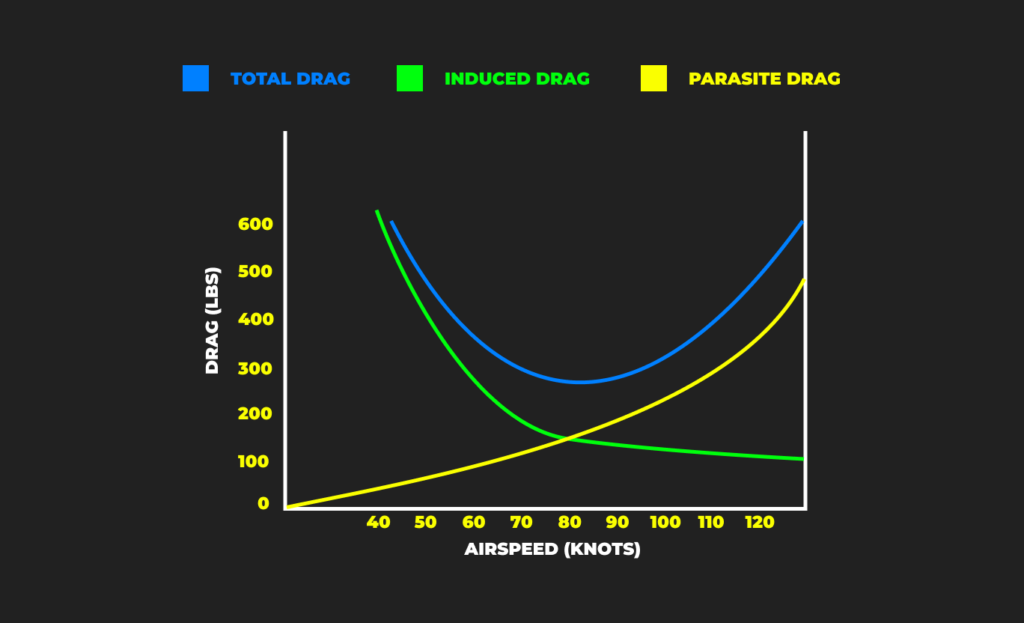When it comes to flying, understanding the forces at play is crucial for both pilots and aviation enthusiasts. One of the most important forces we encounter during flight is drag. Drag is the resistance that opposes the motion of an aircraft through the air, and it comes in different forms. In aviation, there are two main types of drag: Induced Drag and Parasite Drag. Both of these drag forces affect how efficiently an aircraft flies, but they behave differently depending on the speed and angle of attack. Let’s dive deeper into these concepts to understand how they work and how they impact flight.
What is Induced Drag?
Induced drag is directly related to the generation of lift. When an aircraft generates lift, it does so by creating a pressure difference between the top and bottom of its wings. The air on top of the wing moves faster, creating lower pressure, while the air beneath moves slower, creating higher pressure. This pressure difference is what keeps the airplane in the air.
However, as the air moves around the wings, it creates wingtip vortices—spinning currents of air that are caused by the pressure difference. These vortices disrupt the smooth airflow over the wings, which results in induced drag. Essentially, while lift is necessary to keep the airplane airborne, the process of creating lift also creates resistance that slows the aircraft down.
How Does Induced Drag Work?
Induced drag is strongest at low speeds and high angles of attack (AOA). The angle of attack is the angle between the wing and the oncoming airflow. At lower speeds, the aircraft needs a higher AOA to generate enough lift, which increases induced drag. At higher speeds, the aircraft needs a lower AOA to generate the same amount of lift, which reduces induced drag.
This is why induced drag is a significant factor during takeoff and landing, but it becomes less of a concern once the aircraft reaches cruising speed.

What is Parasite Drag?
Parasite drag, on the other hand, is not related to lift. It is the drag caused purely by the resistance of the aircraft moving through the air. Parasite drag increases as the aircraft’s speed increases, which means that the faster you go, the more resistance you encounter.
Parasite drag can be broken down into three subtypes: form drag, skin friction drag, and interference drag. Let’s take a look at each one.
Form Drag – Caused by Shape
Form drag is the resistance created by the shape of the aircraft. When an object with a bulky, non-aerodynamic shape faces the airflow, the air pushes against it and creates more resistance. This is why aircraft have streamlined shapes—to reduce the form drag. For example, a flat surface or boxy shape creates more drag than a smooth, aerodynamic design like an airplane wing or fuselage.
Reducing form drag is essential for improving fuel efficiency and speed, which is why airplanes are designed to be as smooth and aerodynamic as possible.
Skin Friction Drag – The Invisible Resistance
Even though aircraft surfaces may look smooth, they are not perfectly smooth at a microscopic level. This causes air particles to stick to the surface, creating skin friction drag. The rougher the surface, the more resistance is created.
Aircraft engineers go to great lengths to ensure that the surface of the aircraft is as smooth as possible. Clean and polished surfaces help reduce skin friction drag, which is why regular maintenance and cleaning are important to keep the aircraft efficient.
Interference Drag – When Airflows Collide
Interference drag occurs when different airflows from various parts of the aircraft meet and cause turbulence. For example, where the wing meets the fuselage, air flows from the wing and the fuselage collide, creating turbulence and increasing resistance.
Engineers reduce interference drag by designing smooth transitions between the wings, fuselage, and other parts of the aircraft, ensuring that the air can flow as smoothly as possible.

How Parasite Drag Affects Speed
Unlike induced drag, parasite drag increases with speed. The faster the aircraft moves, the more air it has to push through, which creates more resistance. This is why parasite drag is less of a concern at lower speeds but becomes a significant factor at high speeds, like during high-speed cruising.
Balancing Induced Drag and Parasite Drag
In real-world flight, pilots and aircraft engineers try to balance both types of drag to ensure the most efficient flight. While induced drag dominates at low speeds, parasite drag becomes more important as the aircraft speeds up.
Aircraft designers use technologies like winglets to reduce the vortices created at the wingtips, thus lowering induced drag. At the same time, they focus on designing smooth, streamlined fuselages and using retractable landing gear to minimize parasite drag.

Conclusion: Drag and Efficient Flight
In summary:
- Induced drag is caused by the need for lift and is stronger at lower speeds.
- Parasite drag is caused by air resistance and increases as the aircraft moves faster.
- Both types of drag play a role in how efficiently an aircraft flies, and engineers work hard to reduce both to improve performance.
Understanding drag and how it affects flight is crucial for anyone interested in aviation. Whether you’re a pilot, an aviation enthusiast, or someone looking to learn more about how aircraft work, knowing the difference between induced and parasite drag can help you better appreciate the science behind flying.